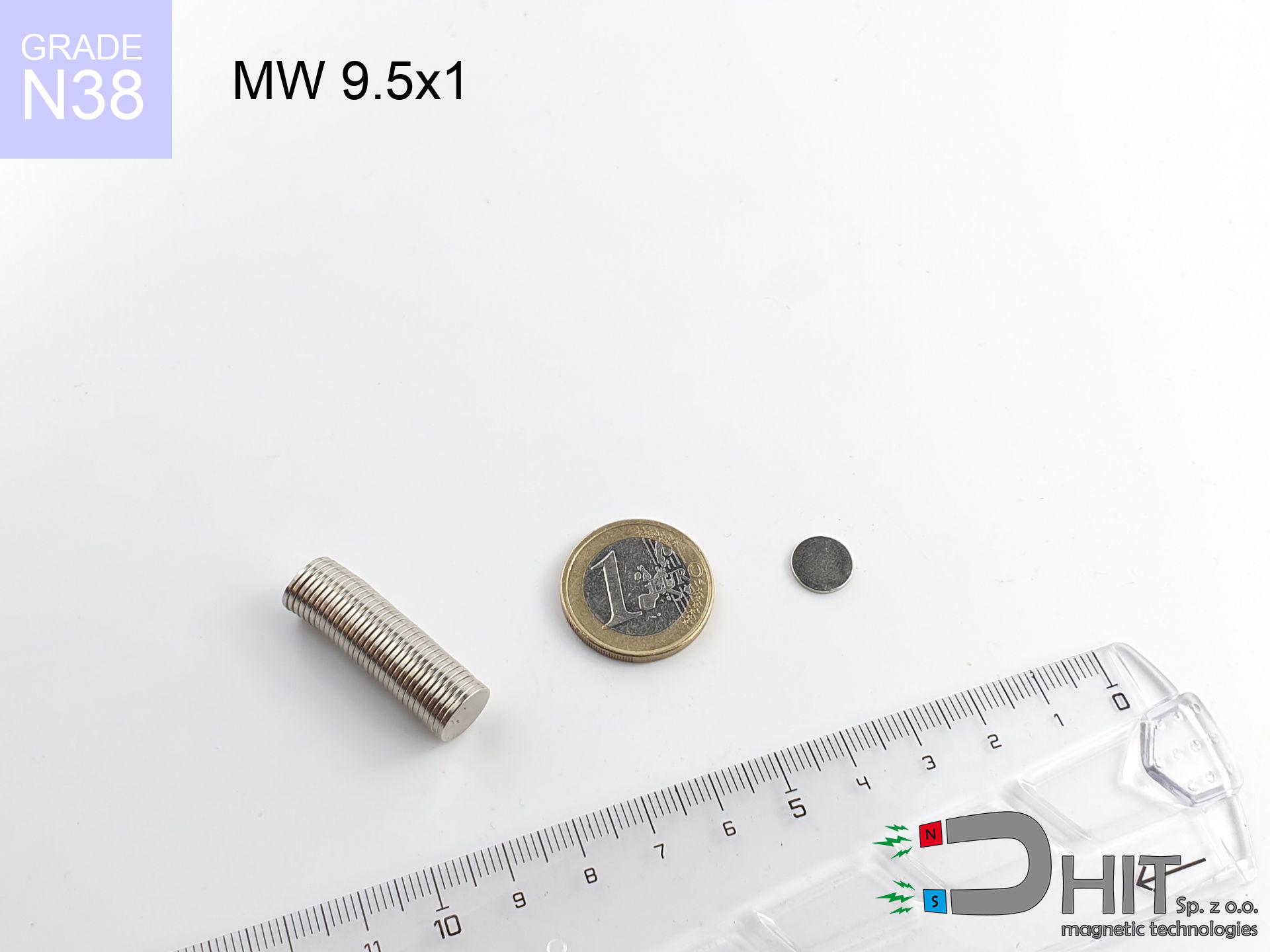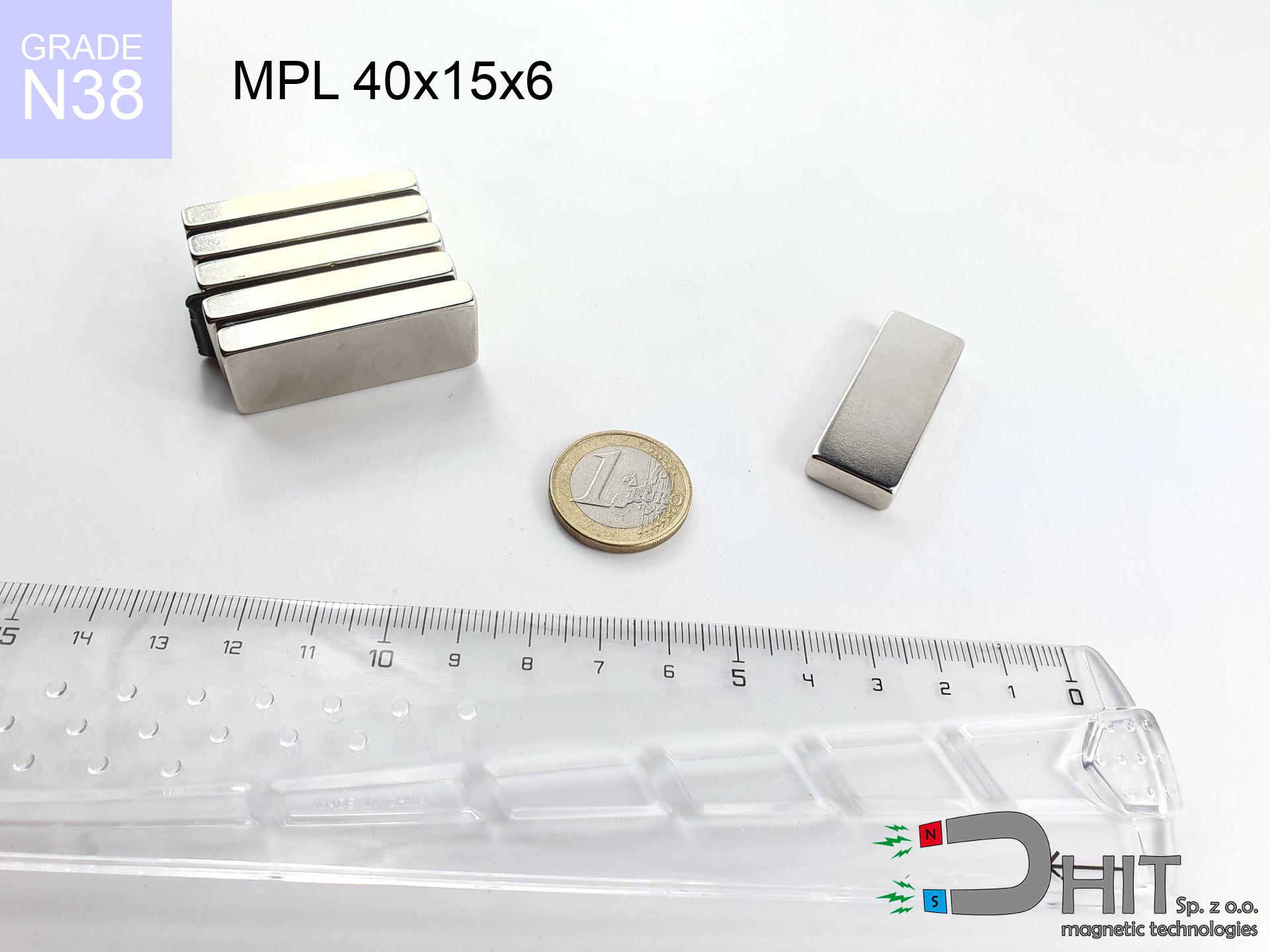UI 17.5x5 [C310] / N38 - badge holder
badge holder
Catalog no 150261
GTIN: 5906301813583
Diameter Ø
17.5 mm [±1 mm]
Height
5 mm [±1 mm]
Weight
0.11 g
Load capacity
0.75 kg / 7.35 N
1.316 ZŁ with VAT / pcs + price for transport
1.070 ZŁ net + 23% VAT / pcs
bulk discounts:
Need more?Not sure where to buy?
Pick up the phone and ask
+48 22 499 98 98
otherwise get in touch by means of
inquiry form
the contact page.
Force and form of a magnet can be calculated using our
magnetic calculator.
Orders placed before 14:00 will be shipped the same business day.
UI 17.5x5 [C310] / N38 - badge holder
Specification / characteristics UI 17.5x5 [C310] / N38 - badge holder
| properties | values |
|---|---|
| Cat. no. | 150261 |
| GTIN | 5906301813583 |
| Production/Distribution | Dhit sp. z o.o. |
| Country of origin | Poland / China / Germany |
| Customs code | 85059029 |
| Diameter Ø | 17.5 mm [±1 mm] |
| Height | 5 mm [±1 mm] |
| Weight | 0.11 g |
| Load capacity ~ ? | 0.75 kg / 7.35 N |
| Manufacturing Tolerance | ±1 mm |
Magnetic properties of material N38
| properties | values | units |
|---|---|---|
| remenance Br [Min. - Max.] ? | 12.2-12.6 | kGs |
| remenance Br [Min. - Max.] ? | 1220-1260 | T |
| coercivity bHc ? | 10.8-11.5 | kOe |
| coercivity bHc ? | 860-915 | kA/m |
| actual internal force iHc | ≥ 12 | kOe |
| actual internal force iHc | ≥ 955 | kA/m |
| energy density [Min. - Max.] ? | 36-38 | BH max MGOe |
| energy density [Min. - Max.] ? | 287-303 | BH max KJ/m |
| max. temperature ? | ≤ 80 | °C |
Physical properties of sintered neodymium magnets Nd2Fe14B at 20°C
| properties | values | units |
|---|---|---|
| Vickers hardness | ≥550 | Hv |
| Density | ≥7.4 | g/cm3 |
| Curie Temperature TC | 312 - 380 | °C |
| Curie Temperature TF | 593 - 716 | °F |
| Specific resistance | 150 | μΩ⋅Cm |
| Bending strength | 250 | Mpa |
| Compressive strength | 1000~1100 | Mpa |
| Thermal expansion parallel (∥) to orientation (M) | (3-4) x 106 | °C-1 |
| Thermal expansion perpendicular (⊥) to orientation (M) | -(1-3) x 10-6 | °C-1 |
| Young's modulus | 1.7 x 104 | kg/mm² |
See more deals
Pros and cons of neodymium magnets.
Besides their high retention, neodymium magnets are valued for these benefits:
- They do not lose strength, even after nearly ten years – the drop in strength is only ~1% (theoretically),
- Neodymium magnets remain extremely resistant to loss of magnetic properties caused by external interference,
- By using a decorative layer of gold, the element acquires an professional look,
- Magnetic induction on the top side of the magnet remains very high,
- Made from properly selected components, these magnets show impressive resistance to high heat, enabling them to function (depending on their form) at temperatures up to 230°C and above...
- Considering the potential of flexible molding and adaptation to individualized needs, magnetic components can be produced in a variety of forms and dimensions, which amplifies use scope,
- Versatile presence in electronics industry – they are used in mass storage devices, motor assemblies, diagnostic systems, also other advanced devices.
- Relatively small size with high pulling force – neodymium magnets offer strong magnetic field in tiny dimensions, which enables their usage in compact constructions
What to avoid - cons of neodymium magnets: tips and applications.
- Susceptibility to cracking is one of their disadvantages. Upon intense impact they can fracture. We recommend keeping them in a special holder, which not only protects them against impacts but also raises their durability
- When exposed to high temperature, neodymium magnets suffer a drop in power. Often, when the temperature exceeds 80°C, their strength decreases (depending on the size and shape of the magnet). For those who need magnets for extreme conditions, we offer [AH] versions withstanding up to 230°C
- Due to the susceptibility of magnets to corrosion in a humid environment, we advise using waterproof magnets made of rubber, plastic or other material resistant to moisture, in case of application outdoors
- Limited ability of producing threads in the magnet and complicated shapes - recommended is a housing - mounting mechanism.
- Possible danger related to microscopic parts of magnets pose a threat, if swallowed, which becomes key in the context of child safety. Furthermore, small elements of these magnets are able to complicate diagnosis medical when they are in the body.
- Due to complex production process, their price is relatively high,
Maximum magnetic pulling force – what contributes to it?
The lifting capacity listed is a result of laboratory testing conducted under specific, ideal conditions:
- on a base made of mild steel, perfectly concentrating the magnetic flux
- whose thickness is min. 10 mm
- with a surface cleaned and smooth
- without any insulating layer between the magnet and steel
- for force applied at a right angle (pull-off, not shear)
- at ambient temperature room level
Lifting capacity in real conditions – factors
Bear in mind that the magnet holding may be lower depending on the following factors, in order of importance:
- Gap between surfaces – every millimeter of separation (caused e.g. by veneer or unevenness) drastically reduces the pulling force, often by half at just 0.5 mm.
- Pull-off angle – note that the magnet holds strongest perpendicularly. Under sliding down, the capacity drops drastically, often to levels of 20-30% of the maximum value.
- Steel thickness – too thin steel does not accept the full field, causing part of the flux to be lost to the other side.
- Steel grade – ideal substrate is pure iron steel. Hardened steels may generate lower lifting capacity.
- Surface structure – the more even the plate, the better the adhesion and higher the lifting capacity. Unevenness creates an air distance.
- Heat – neodymium magnets have a negative temperature coefficient. When it is hot they are weaker, and at low temperatures gain strength (up to a certain limit).
* Holding force was measured on a smooth steel plate of 20 mm thickness, when a perpendicular force was applied, however under parallel forces the lifting capacity is smaller. In addition, even a small distance {between} the magnet’s surface and the plate reduces the holding force.
Precautions when working with NdFeB magnets
Health Danger
For implant holders: Strong magnetic fields affect medical devices. Keep at least 30 cm distance or request help to work with the magnets.
Compass and GPS
Navigation devices and mobile phones are extremely sensitive to magnetic fields. Close proximity with a strong magnet can ruin the sensors in your phone.
Magnetic media
Intense magnetic fields can destroy records on payment cards, HDDs, and other magnetic media. Keep a distance of min. 10 cm.
Magnets are brittle
NdFeB magnets are ceramic materials, which means they are very brittle. Clashing of two magnets will cause them shattering into shards.
Allergy Warning
Allergy Notice: The Ni-Cu-Ni coating consists of nickel. If skin irritation happens, cease handling magnets and wear gloves.
Caution required
Before starting, check safety instructions. Sudden snapping can break the magnet or injure your hand. Be predictive.
Combustion hazard
Machining of NdFeB material carries a risk of fire risk. Magnetic powder reacts violently with oxygen and is difficult to extinguish.
Hand protection
Watch your fingers. Two large magnets will join instantly with a force of massive weight, destroying everything in their path. Exercise extreme caution!
Danger to the youngest
Neodymium magnets are not intended for children. Accidental ingestion of several magnets may result in them connecting inside the digestive tract, which constitutes a direct threat to life and necessitates immediate surgery.
Demagnetization risk
Keep cool. Neodymium magnets are sensitive to temperature. If you need resistance above 80°C, inquire about HT versions (H, SH, UH).
Attention!
More info about hazards in the article: Magnet Safety Guide.

![Magnet for badge UI 17.5x5 [C310] / N38 Magnet for badge UI 17.5x5 [C310] / N38](https://cdn3.dhit.pl/graphics/banners/magnet.webp)
![UI 17.5x5 [C310] / N38 - badge holder](https://cdn3.dhit.pl/graphics/products/ui17.5x5-c310-rud.jpg)
![AM ucho [M8] - magnetic accessories AM ucho [M8] - magnetic accessories](https://cdn3.dhit.pl/graphics/products/am-ucho-m8-lib.jpg)


![SM 18x125 [2xM5] / N42 - magnetic separator SM 18x125 [2xM5] / N42 - magnetic separator](https://cdn3.dhit.pl/graphics/products/sm-18x125-2xm5-cij.jpg)

